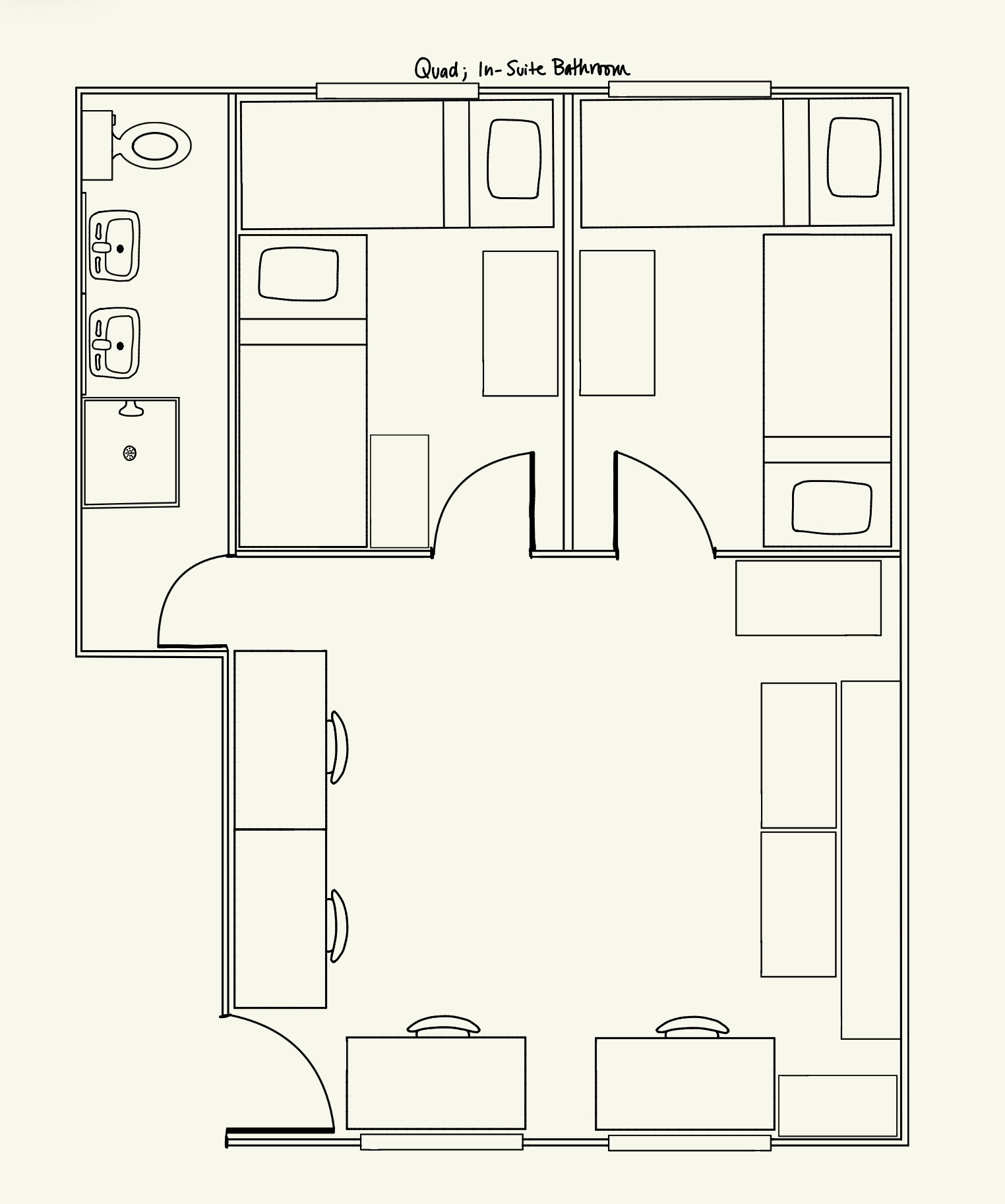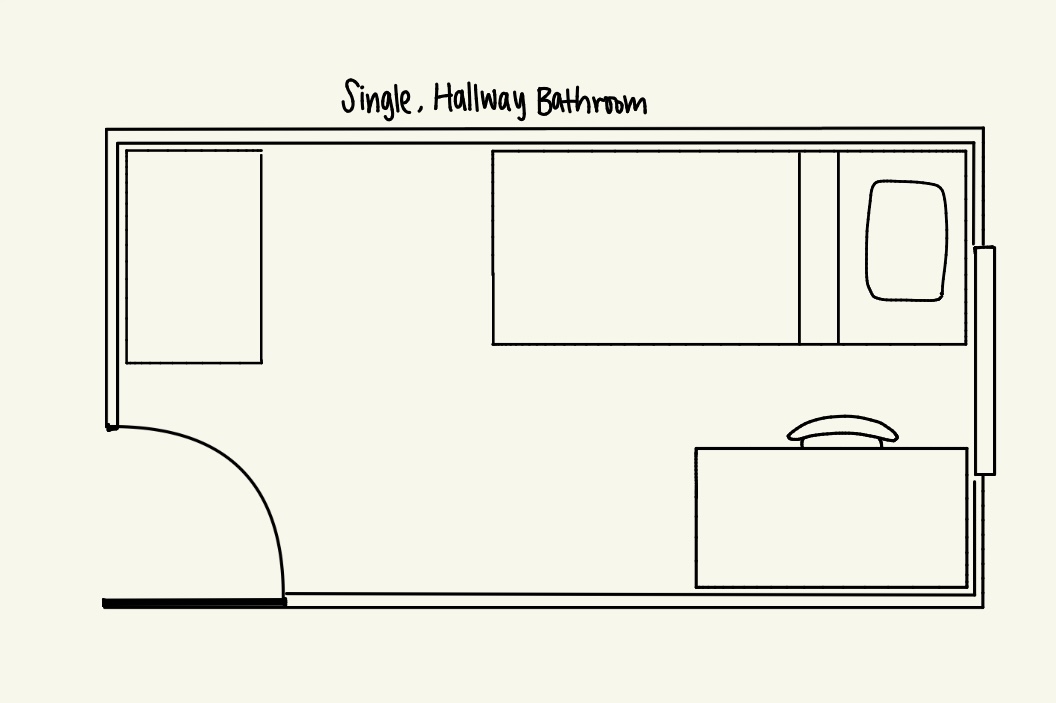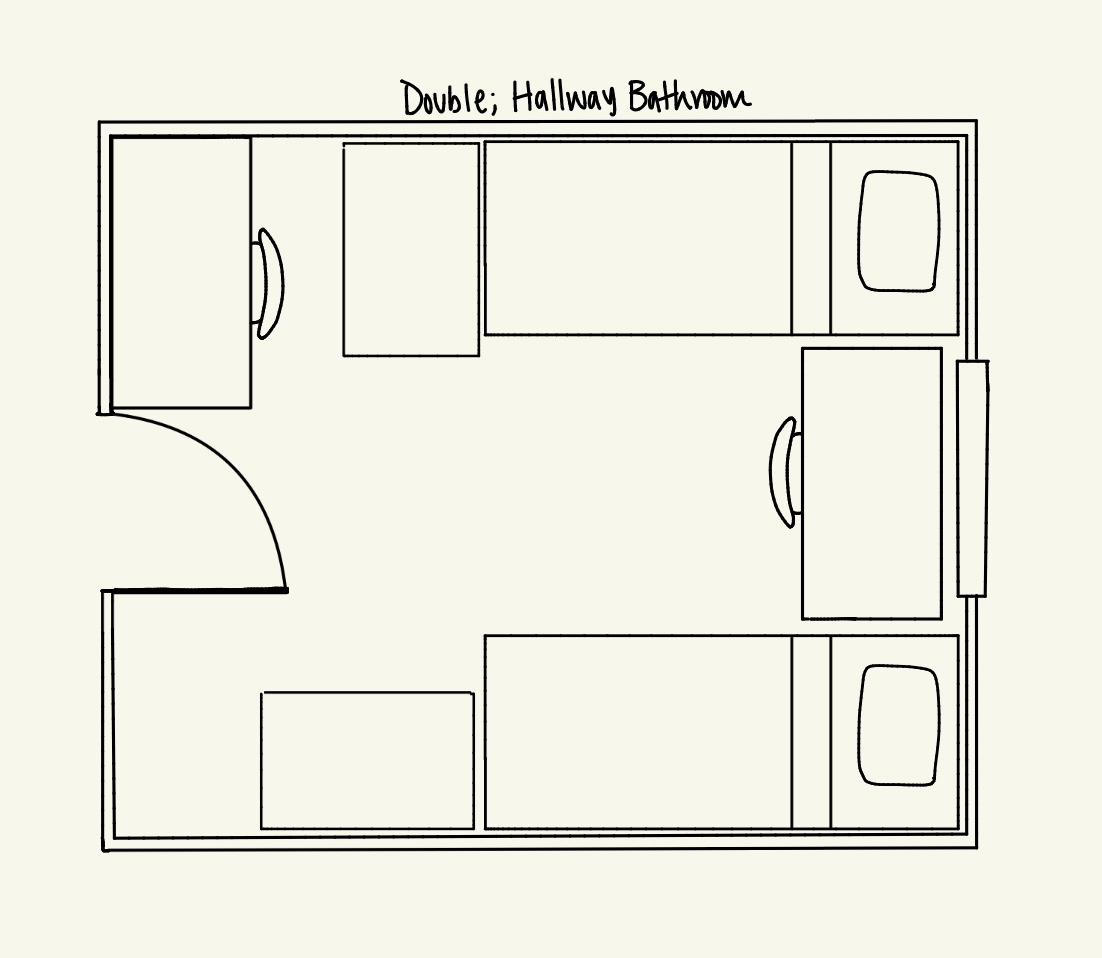
Dorm Room Architecture
When a student commits to Harvard College, one of the first documents they fill out is the First-Year Housing Questionnaire. Here, students are required to answer a list of questions, ranging from the personal — such as average sleeping hours and smoking habits — to the preferential — including en-suite bathroom and sociality of the dorm. Little do most students know, this form will not only determine hyper-specific aspects of their future dormitory, but will consequently shape their experience of community in their first year on campus.
Situated within the 25 acres of Harvard Yard or else closely orbiting, the 18 dorms housing first-years in 2025 are a historical hodgepodge of styles and architecture. The official Massachusetts Hall, completed in 1720, stands less than a five-minute walk from Canaday Hall, built in 1974. Hollis Hall, erected in 1763, rests cattycorner on the Old Yard to Weld Hall, completed in 1871. Some dorms were originally off-campus apartments, others were originally primarily offices.
The upshot? Many different buildings, constructed at many different times, for many different purposes. It’s no surprise that, unlike many other universities, Harvard’s first-year dorms are far from standardized.
Data provided by the Office of First-Year Experience reveals that the College has 14 different room configurations. This calculation is based on the number of suite occupants, the presence or absence of a common room, and whether a suite has an en suite or hallway bathroom. Nekesa Straker, senior assistant dean of residential life and first-year students, notes that when the number of bedrooms is taken into account — which the college doesn’t statistically track — that number grows. By the time you’ve accounted for meaningful differences in room size and shape, not to mention the room’s spatial arrangement, the number of combinations is even greater.
The variety of Harvard’s dorms is atypical. Nearby Northeastern University, for example, boasted an incoming class size of roughly 2,700 in 2024, roughly 1,000 more students than Harvard’s class of 2029. However, despite this disparity and Northeastern’s urban setting, the university’s housing website lists just 12 dorm options — six fewer than Harvard — the majority of which are semi-private doubles and triples.
The Ivy League is a similar story. Princeton University has seven residential colleges primarily composed of singles and doubles, sometimes grouped in larger suites, while Columbia University’s five first-year halls are mostly singles and doubles.
With such variety in room layout, Harvard first-years experience the social functions of their dorms differently. Chase G. Washington ’29, says his “giant double” in Stoughton Hall has caused him to feel more independent, but Wren Horne-Sarkees ‘29, whose four-person Holworthy Hall suite shares a bathroom with an adjoining suite, reports that her floor’s layout gives her “a greater mix of people.”
The process to place Washington and Sarkees in their respective dorms was far from random. Rather than run an algorithm to match roommates together, students are randomly assigned to one of four yards — Crimson, Elm, Ivy, and Oak. From there, yard deans comb through students’ housing forms, looking to pair students, who, as Straker puts it, “would connect but probably wouldn’t find each other on their own.” A student who requests a very social dorm might be more likely to be placed in a suite with a common room, while athletes may be grouped together based on their similar daily schedules.
Another unique Harvard housing policy? Not assigning students to bedrooms. Straker, who assigned roommates to individual bedrooms during her time at Boston College, explains: “Because all of the rooms are so different, who are we to make that decision?”
This policy can complicate the roommates’ relationships with one another before arriving on campus, particularly in dorms where there’s an unequal number of students and bedrooms. However, Straker believes that the emphasis the First-Year Experience Office has placed on roommate agreements alleviates most issues. “We don’t have many roommate conflicts compared to my previous experience,” Straker asserts, though she makes sure to rap her knuckles on her wooden desk before speaking.
Generally, interviewed first-years across different dorm configurations respond well to the college’s approach, although their reasons vary from dorm to dorm. Students in doubles value their privacy; those in larger suites embrace the social common area. Whether due to the housing application, careful room pairings, or the dorm space itself, students generally reflect positively on their first-year housing despite — or perhaps because of — its many differences.
As I conclude our interview, I pose Straker a hypothetical: if you had the option, would you choose to standardize all the dorms? She ponders a moment, reflecting on her experience at BC and acknowledging the equity such a system creates. Before too long, though, she had her answer: “I honestly think there is a value in differences. If you were to redesign, it would be very cookie-cutter. Harvard is cool because it isn’t cookie-cutter.”
Below, see the five most common dorm types at Harvard and how first-years perceive their impact on their experience with community.

Single with Hallway Bathroom and No Common Room: 67
“Having a single dorm makes it a little bit harder to form a community. It made me realize that if I really wanted to put myself out there, make more connections and make more friends, I need to reach out myself. People aren’t really going to come up and reach out and try to be friends, so I need to be very attentive with how I put myself out there. I have a couple buddies in my entryway, but for the most part, I need to go out and reach out to the other guys, and they’re very receptive. I’m very intentional about how I present myself. Once I started realizing that it’s on me to make my community, I haven’t had an issue with that.”
—Octavio F. Sanchez ’29; Hurlbut

Double with Hallway Bathroom and No Common Room: 59
“When you have one roommate, (because) often I'm in and out of my dorm, I don't see them often, and people in my hall I don't really see often either. Mainly, I'll interact with people on my floor. But other than that, anyone else on a different floor is someone I don't really see that often. There is less of a community, I feel like in the double dorms where in other dorms that have a giant suite, there's more of a community there.”
—Chase G. Washington ’29; Stoughton
Double with En-suite Bathroom and Common Room: 82
“We had to move one of the beds out to the common room. It’s obviously nice that we have our own spaces, but we don’t have a social space. A lot of other dorms have the couch and the TV in their common room, but we don't really have any of that. I think one sacrifice for having more privacy or more space in our rooms is that we have less of a physical, social aspect in our own rooms. Obviously, I could bring people into my room, but I can’t put a TV in my room or something. In a way, it forces me to actually branch out of my own room.”
—Nuriya Z. Khwaja ’29; Wigglesworth
Triple with Hallway Bathroom and Common Room: 66
“I think the one thing that I would prefer, if I got to choose, was more suitemates. Personally, I’m not super close to my two suitemates, and I’m kind of in an isolated area of Matthews, so just with where that is, it makes it hard to connect with other people that are in my hall. Oftentimes in my room, it feels like I’m kind of alone, so I tend to spend more time not in my room, I tend to spend more time in other people’s rooms or in libraries.”
—Alexander J. Ung ’29; Matthews

Quad with En-suite Bathroom and Common Room: 94
“We have a nice common room, so I think that’s a nice place for us all to hang out. I feel like I’ve gotten closer with my roommates just by virtue of being in a room with them late at night talking. I will say, having two doubles, I do think you feel a little bit secluded from your suitemates, because you’re with your roommate but not with your suitemates. I think that does influence social dynamics a little bit, but I’m really happy, we’ve been able to bond.”
—Jasmin A. Rossi ’29; Pennypacker


